Volkswagen Has Launched The ID. Buzz LWB Seven-Seater In North America: European Launch Scheduled For 23 June
The Lagos State government wouldn't be so intent on getting rid of danfo buses from our roads and bus stops if the streets are flooded with ID. Buzz minivans or the latest LWB (long wheelbase) multi-purpose van (MPV) version, instead of the usually rickety, noisy 45-year-old VW Kombi vans. However, the Vanagon/Transporter has come a long way in terms of design, engineering, and technology since the German automaker introduced it in 1979.
Volkswagen has introduced the long-wheelbase seven-seater ID. Buzz in North America, marking its debut in the region. The timing can't be more perfect, considering the current push in Nigeria to migrate from petrol to alternative energy sources. The price of fuel has skyrocketed to detrimental levels in Nigeria following the abrupt suspension of petrol subsidies. As the country groans under the crushing weight of high pump prices, the government is encouraging the adoption of CNG as a cheaper alternative to petrol.
Interestingly, the ID. Buzz is all-electric, and the LWB model brings an even bigger 85kWh battery that can keep the van going for 258 miles on a full charge. We don't have to wait until we see the sleek and quiet ID. Buzz everywhere with a conductor yelling “Obalande” through the window. The Buzz is perfect for families and business owners, complete with a Buzz Cargo model, which VW says is “visually inspired by the first campervan… designed to make your working life easier.” Below is what we know so far about the recently unveiled grown-up danfo.
Related: Mercedes-Benz To Unleash The Company’s Refreshed Midsize Vans Portfolio This Summer
The ID. Buzz Looks Buzz-Worthy
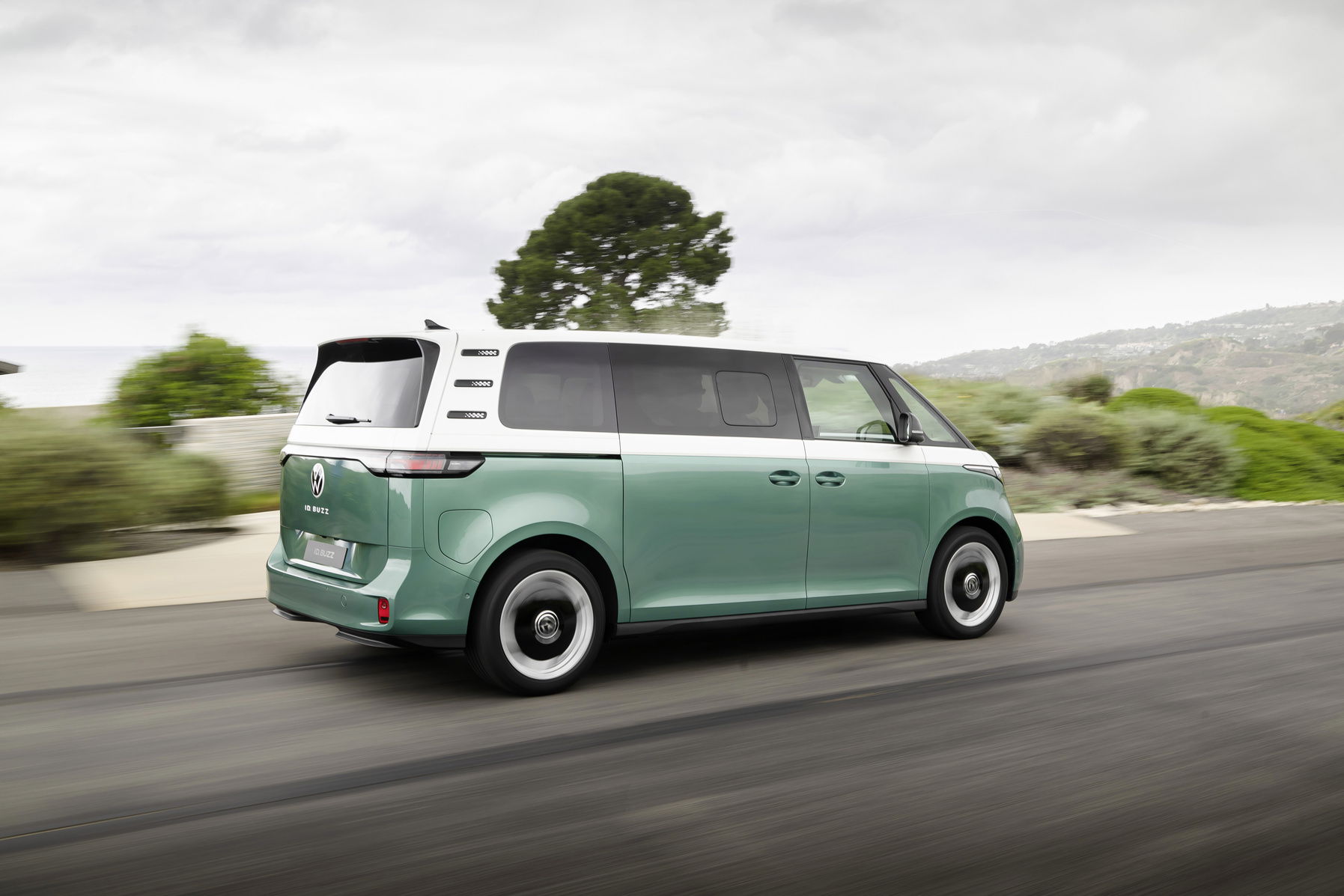
On the other hand, the ID. Buzz’s van variant retains its stylish design and can be customized to suit individual needs.
Customers can choose between a full-height tailgate or barn doors at the back, and the front seat can either be a two-seater bench or an individual seat.
The van’s rear section provides ample space for two Euro pallets, but the maximum payload capacity is a modest 650kg. The load-through flap is an optional feature in the fixed bulkhead.
The Volkswagen ID.Buzz Architecture
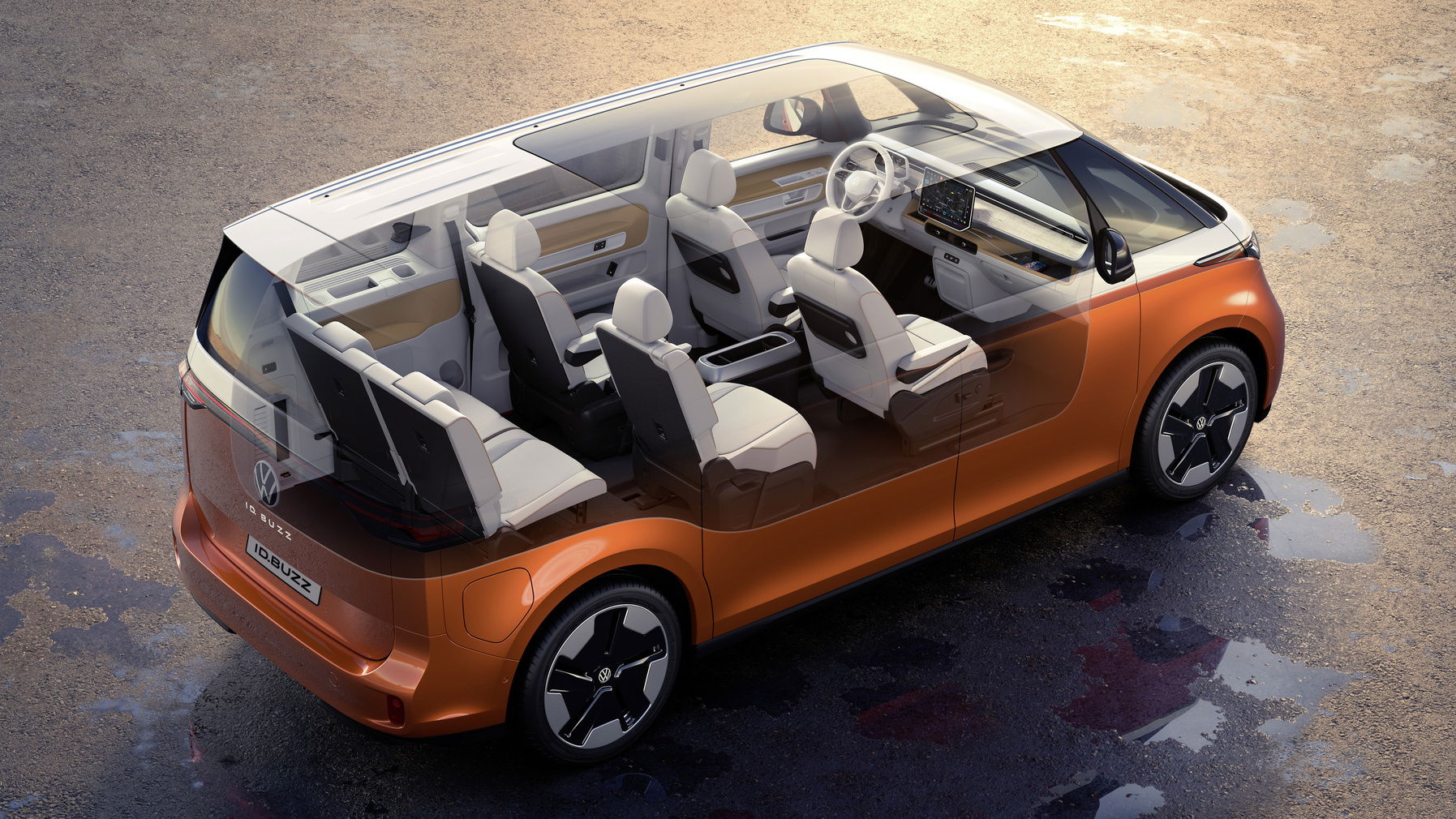
The ID. Buzz is constructed on the same MEB platform as the Volkswagen ID.3 hatchback and combines the classic practicality of the Volkswagen Type 2 with the aero-focused swoopiness of the ID.3.
It features Volkswagen's widely-used full-width light bar, two-tone paintwork, short overhangs, and a massive VW roundel at the front.
Despite being significantly shorter than a T6.1 Transporter at 4,712mm long, it has a similar wheelbase. This means that the Buzz sits at the center of the min-max Venn diagram, providing both ample interior space and excellent maneuverability.
Volkswagen ID. Buzz LWB Will Begin Hitting The Roads In 2024
The electric MPV has been enlarged, providing greater practicality and an 85kWh battery pack that offers a maximum range beyond the typical 258-mile range of the standard van.
With this update, Volkswagen can compete with other leading electric seven-seaters on the market. The European launch of the seven-seat Volkswagen ID. Buzz is scheduled to occur in Hanover from June 23 to June 25.
However, the initial production vans will not appear on UK roads until mid-2024. The first North American models will be delivered to their owners at the same time as they will be produced in the same German factory.
Volkswagen has also announced plans for a performance-focused, all-wheel-drive GTX version of the long-wheelbase ID. Buzz, which is slated for release in 2024.
The Volkswagen ID. Buzz LWB's Powertrain Has Also Grown Up
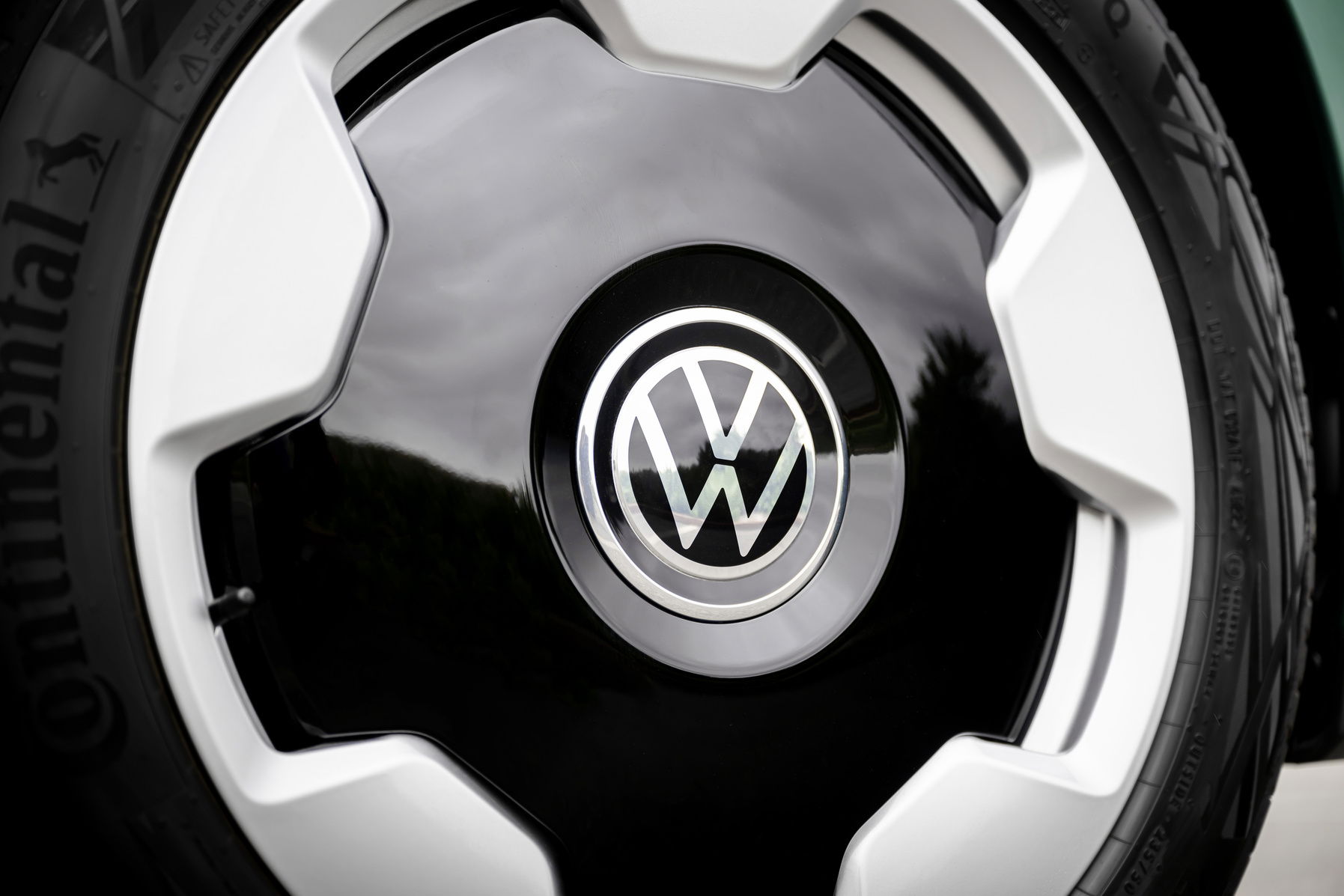
According to Volkswagen, the dual-motor electric powertrain of the new ID. Buzz will produce 335 horsepower, enabling the van to accelerate from 0 to 62 mph in 6.4 seconds.
To appreciate the updated powerplant, note that this is the same speed as a manual transmission Volkswagen Golf GTI.
North American customers will have the option to choose the seven-seat ID. Buzz with a new 282-horsepower electric powertrain, which is not available in the five-seat version due to the larger body and bigger battery.
According to Volkswagen, this new powertrain will boost the top speed from 90 mph to nearly 100 mph. There is no confirmation yet on whether this powertrain will be offered in Europe. Thankfully, ours are mostly imported from the United States.
The standard van model is equipped with a 77kWh battery pack and a 201-horsepower electric motor urging the rear axle, which is similar to the ID.3 car model.
However, the company plans to introduce more potent electric motors and battery packs in the upcoming months. The battery pack is positioned on the floor to keep the vehicle's center of gravity low.
The van also features 170kW charging onboard, enabling the battery to reach 80% capacity in approximately 30 minutes, subject to finding a fast enough DC charge point.
Additionally, Volkswagen has integrated a bi-directional charging system into the vehicle, allowing owners to use the stored energy in the ID. Buzz's battery to power domestic homes.
Volkswagen is also actively experimenting with a fully autonomous variant, which it intends to launch before 2025.
The LWB ID. Buzz Offers A More Spacious Interior And Cutting-Edge Technology
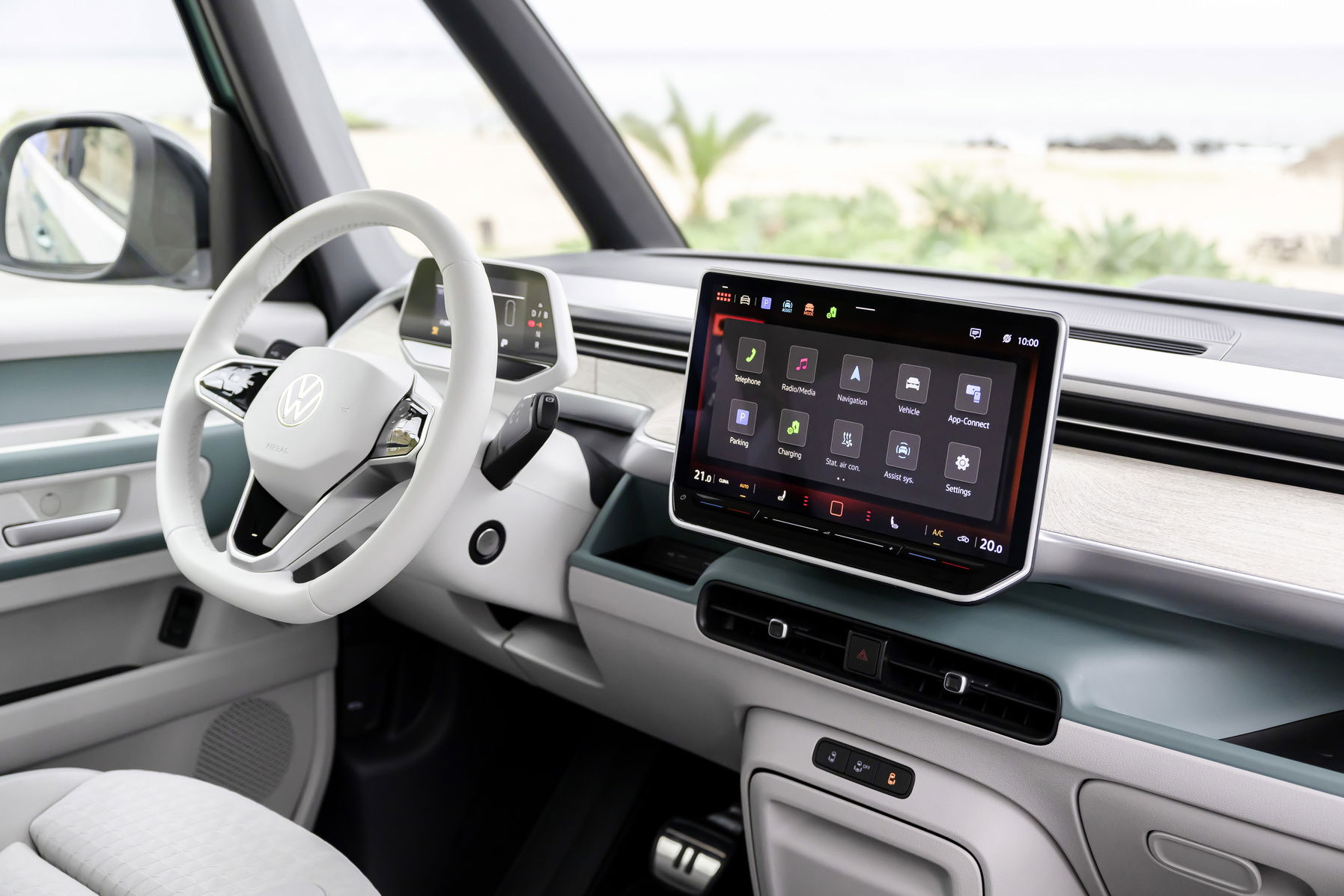
The LWB ID. Buzz has received significant updates over the standard version.
The electric MPV’s wheelbase has been increased by an additional 250 mm, which has resulted in more space for a third row of seats, as well as a larger boot capacity of up to 2,469 liters.
The extended wheelbase also allows for more battery cells to be installed, and a new heat pump has been added to enhance efficiency during colder months.
Additionally, the ID. Buzz now has a head-up display, an advanced infotainment system, and a remote parking feature that can be controlled using a smartphone, similar to Tesla's system.
Who could’ve thought we’d see the day danfo comes with a head-up display and remote parking?
Volkswagen has also equipped the seven-seat ID. Buzz with an upscale electrochromic glass sunroof that can be adjusted from transparent to opaque using a touch slider on the dashboard or through voice commands.
Volkswagen took care to ensure the van's practicality by providing a completely flat load space when all seats are folded down.
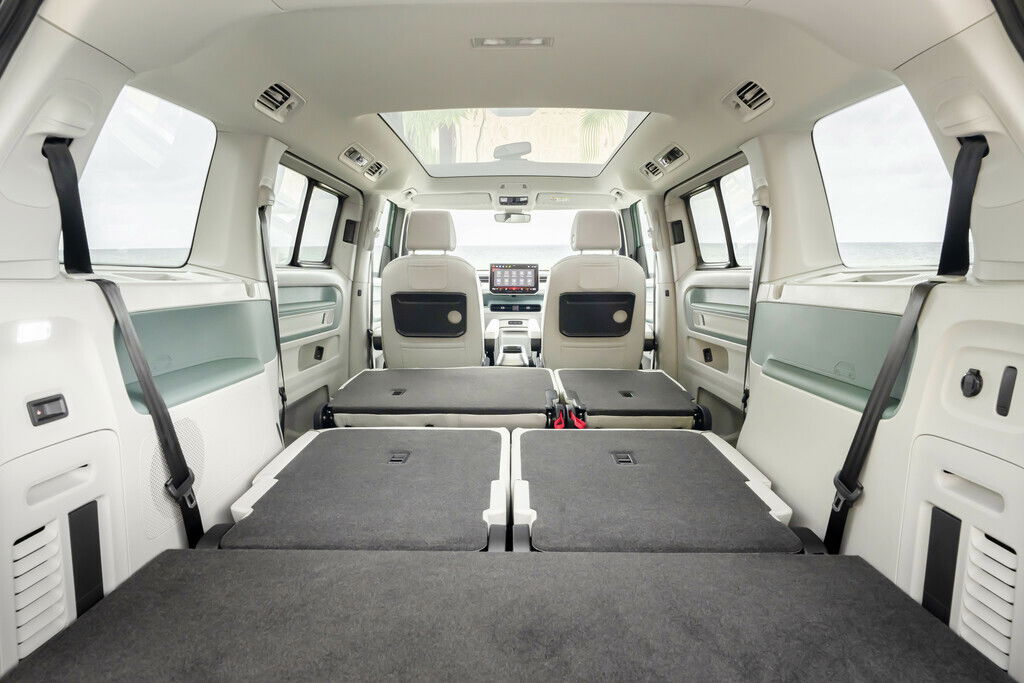
The stowed rear seats align with the level of the tumbled second row, and there is a two-position boot board that can get raised to the same height as the folded seats. The design is quite impressive.
The completely flat load space across the folded rear seats improves the convenience of loading long and heavy items without having to bend down.
The photos we’ve seen suggest that a six-seat variant with two captain's chairs in the second row may be available, but it is unclear whether this option will be available in Europe.
The van's basic model is predominantly black plastic, whereas the high-end versions come with brightly colored upholstery and faux wood detailing on the dashboard. However, all models feature a large central touchscreen and a column-mounted instrument display.
Additionally, the vehicle boasts several intelligent storage systems, such as a broad shelf above the glove compartment lined with non-slip rubber and the 'Buzz Box' storage container between the front seats.
The materials used in the van's interior are eco-friendly, with the upholstery made of recycled plastics. The cabin is adorned with various small decorations, including smiley faces on the screw covers and embossed van logos on the armrests.
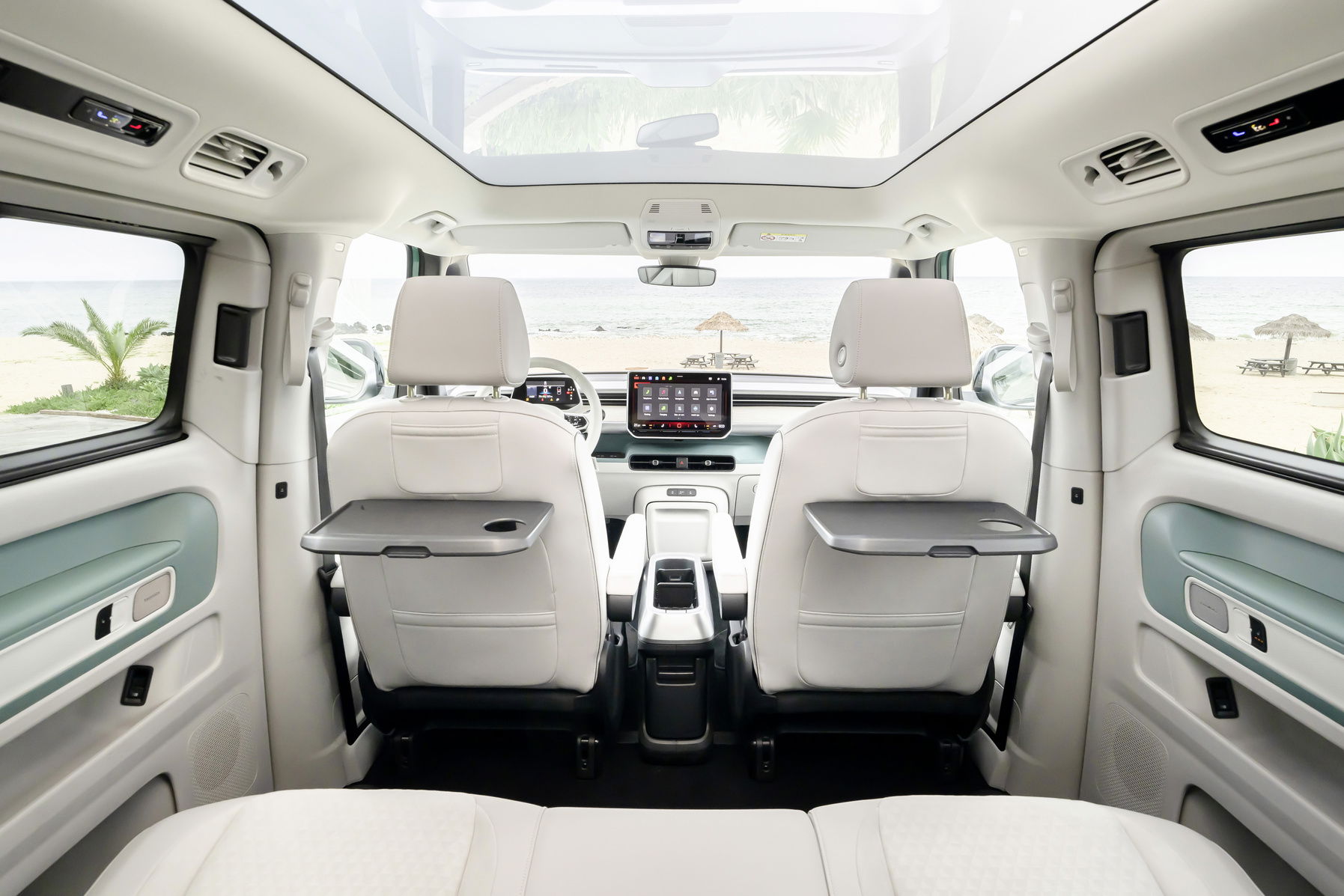
We regret that despite these features, the ID. Buzz's cabin may not be as practical for families as one would expect from a typical van.
Speaking of practicality, the ID. Buzz may not offer the level of convenience as the Peugeot 5008 when it comes to accommodating three child seats in a row.
Additionally, the front passenger seat lacks an Isofix point. Unlike its competitors, the rear bench is a standard 60/40 split arrangement, rather than three individual seats.
Maybe we’re just worried that danfo drivers would be sorely tempted to rip the entire cabin out and replace it with multiple locally-made benches for extra space.
Related: Smaller EV prices to come down as EV sales climb, IEA says - Source: Reuters
ID.Buzz GTX: A Van With Hot-Hatch Blood
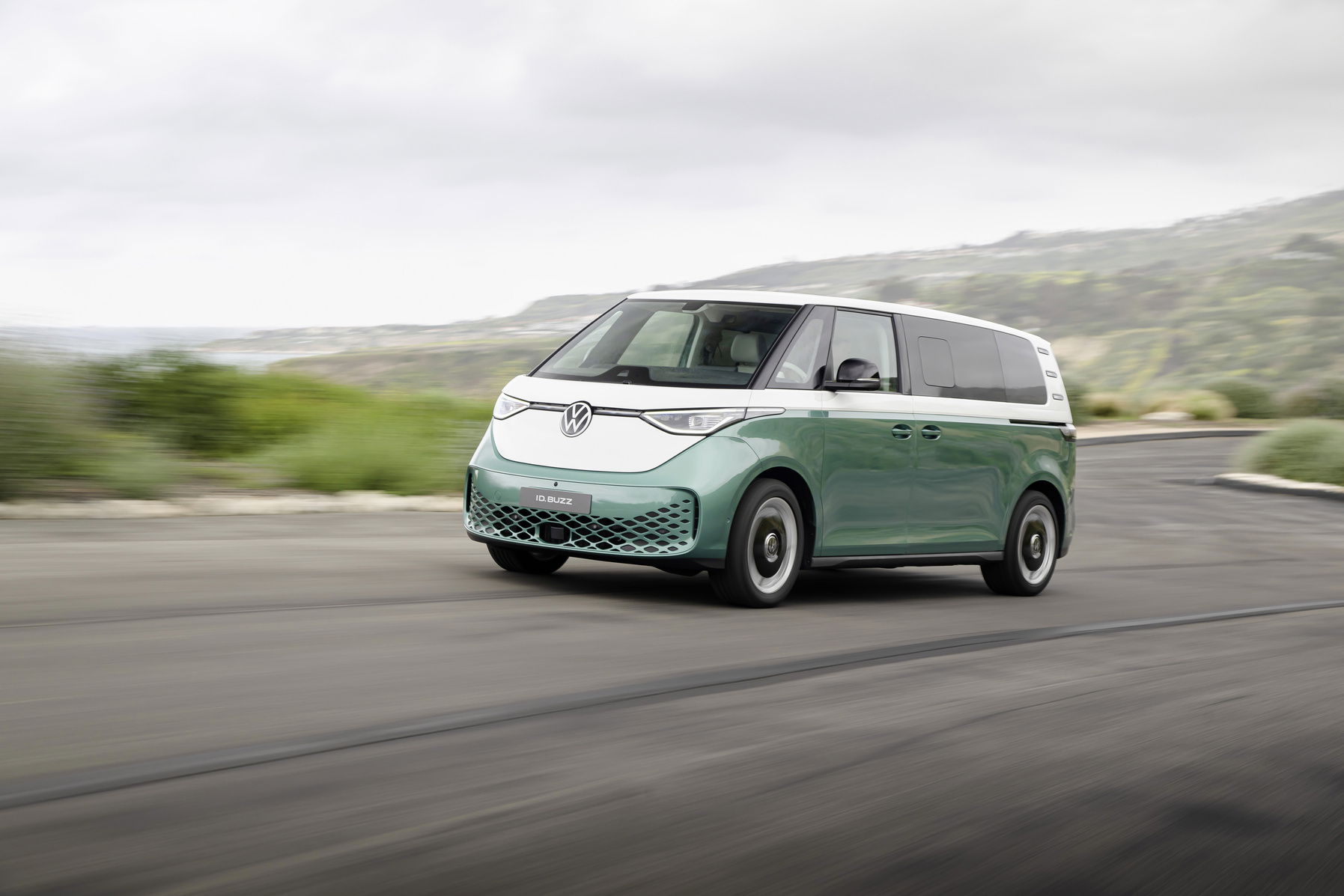
Volkswagen has confirmed the launch of a GTX version of the long-wheelbase ID. Buzz in 2024, but it has not been determined whether the more potent powertrain will be available in the standard-length van.
However, since the platform is compatible with the same all-wheel drive 335-horsepower electric powertrain, it may be possible to install the ID.4 and ID.5 GTX's 77kWh battery pack.
More information will be provided as it becomes available. During Car Magazine’s conversation with Volkswagen's CEO, Thomas Schäfer, and R&D chief, Kai Grünitz, they revealed some exciting news about the expansion of the ID. Buzz family.
In the coming years, Volkswagen will introduce long-wheelbase, GTX, and California variants. Grünitz also shared that the upcoming ID. Buzz GTX will be a high-performance vehicle with over 250kW of power, making it both powerful and cool.
The new GTX powertrain should give the ID. Buzz a much-needed boost, as the launch model weighs a hefty 2.5 tonnes and takes a leisurely 10.2 seconds to accelerate from 0 to 62 mph.
However, the forthcoming seven-seater GTX model is anticipated to reduce this time to approximately six seconds. If the powertrain is also incorporated into the five-seater Buzz, it may even dip below the five-second mark.
The upcoming sporty version of the ID. Buzz will receive the same range of styling enhancements as the ID.4 GTX and ID.5 GTX, as Volkswagen believes that it is pointless to have a lot of extra power if other drivers don’t get to experience it.
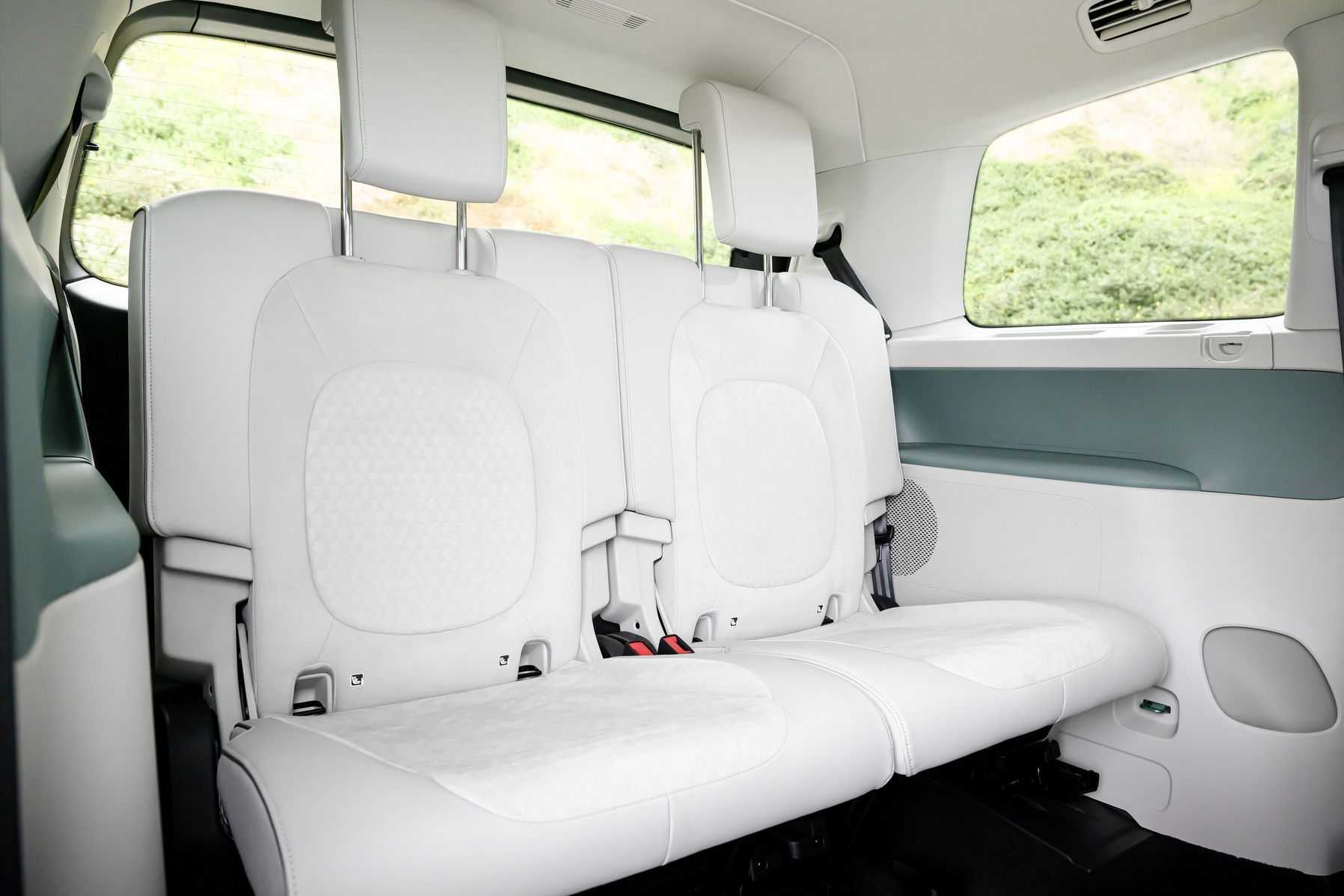
Additionally, the GTX model will feature new exterior colors and a dedicated interior, with larger alloy wheels, a more aggressive body kit, and sports seats.
Although Volkswagen has been secretive about the ID. Buzz California campervan, interviews with VW executives suggest that it is in the works. However, it appears to still be in the development stages at present.
According to Grünitz, “There will be a camper version. We're working on the first concepts; we're still investigating what's possible."
The official timeline for the all-electric camper is set for the second half of this year. Although it is expected to be lovable, the challenge will be to make it semi-affordable since the base car starts at around the equivalent of ₦34.6 million.
Pricing For The Volkswagen ID.Buzz LWB
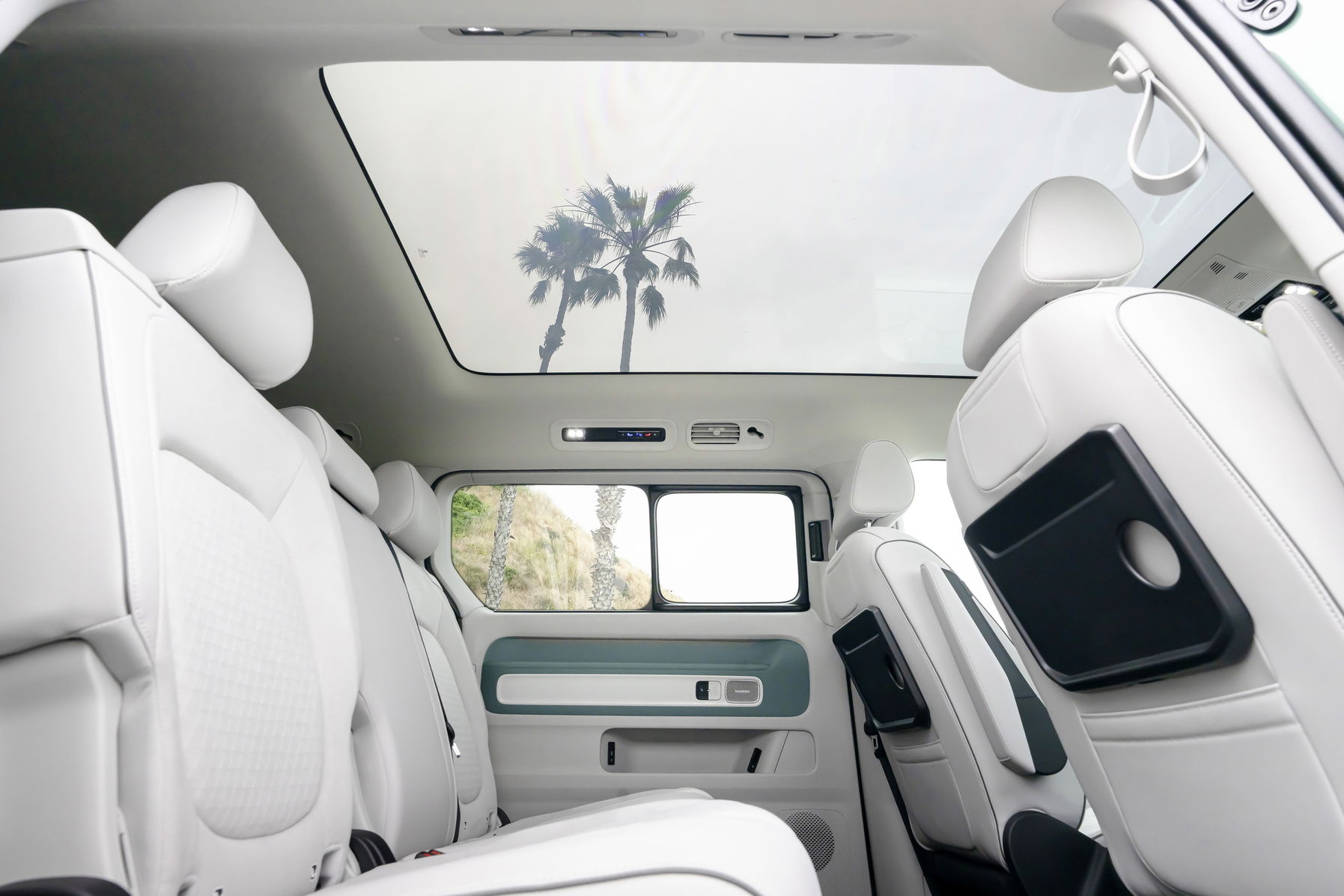
Although industry watchers expect the ID. Buzz LWB pricing to start at approximately $40,000 (around ₦17 million) when it hits the market next year, only prices and specifications for the five-seat standard wheelbase ID. Buzz has been released at the moment.
We don’t expect to get pricing confirmation for the seven-seat LWB ID. Buzz until Spring 2023. Despite high pricing, conventional VW California buyers do not seem deterred, and combustion-engined alternatives will continue with a camper based on the Multivan, which is now confirmed.
The ID. Buzz base Life model is priced at around the equivalent of ₦35.2 million and includes features such as 19-inch alloy wheels, heated front seats, a rear-view camera, a 10-color interior ambient lighting system, and a 10-inch touchscreen with wireless Apple CarPlay and Android Auto.
Next in line is the ID. Buzz Style model, which is priced from around the equivalent of ₦38 million and comes with 20-inch alloy wheels, automatic LED matrix headlights, a 30-color ambient lighting system, and an electrically operated tailgate.
The steering wheel, dashboard, and center console are also trimmed in white plastic.
For business owners, florists, artisan bakers, (and, of course, danfo drivers) who don't need extra seats in the back, the Volkswagen ID. Buzz Cargo panel van is a great option. Prices for this van start at £43,421 (₦26 million), including VAT and the government's £5,000 plug-in van grant. Start saving.